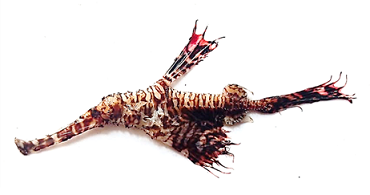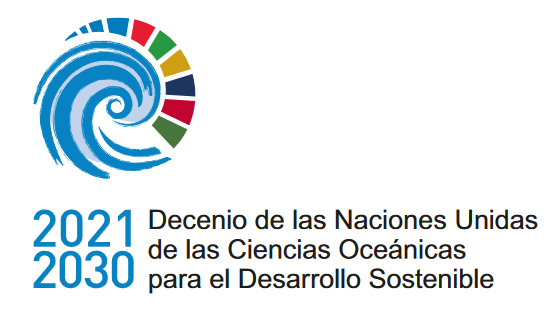Primer registro del pez pipa fantasma arlequín Solenostomus paradoxus en la India
DOI:
https://doi.org/10.47193/mafis.3812025010104Palabras clave:
Pez pipa falso, osificación estrellada, cresta supraoccipital, espínulas, bolsa de cría, camuflaje crípticoResumen
Este estudio documenta la primera aparición de una hembra de pez pipa fantasma arlequín, Solenostomus paradoxus (Pallas, 1770) en la India, capturada a una profundidad de 40 m en el Mar Arábigo. Proporciona además la primera descripción detallada de las características morfométricas y merísticas de esta especie en esta región. Debido a su pequeño tamaño, su camuflaje efectivo y sus necesidades específicas de hábitat, los peces pipa fantasma arlequines son difíciles de estudiar, y sus comportamientos solitarios y estacionales complican aún más la investigación. Este trabajo agrega conocimiento valioso a la comprensión limitada de esta especie esquiva y destaca la necesidad de una mayor exploración de la biodiversidad marina subrepresentada.
Descargas
Referencias
Bannikov AF, Carnevale G. 2017. Eocene ghost pipefishes (Teleostei, Solenostomidae) from Monte Bolca, Italy. Boll Soc Paleontol Ital. 56 (3): 319-331.
Dick K, Pollom R. 2017. Solenostomus paradoxus. [errata version of 2016 assessment]. IUCN Red List of Threatened Species. e.T65363417A115409075.
Jungersen HFE. 1908. Ichthyotomical contributions. I. The structure of the genera Amphisile and Centriscus. Kgl. Dansk Vidensk. Skr. 7 R. Afd. 6: 41-109.
Jungersen HFE. 1910 Ichthyotomical contributions. II. The structure of the Aulostomidae, Syngnathidae and Solenostomidae. Mém. Acad. Roy. Sci. Lettr. Danemark. 7 sér. Sect. Sci. 8: 269-363.
Nakabo T. 2002. Introduction of Ichthyology. In: Nakabo T, editor. Fishes of Japan with pictorial keys to the species. Tokyo: Tokai University Press. p. 21-23.
Nelson JS. 2006. Fishes of the world. 4th ed. Hoboken: John Wiley and Sons.
Nelson JS, Grande TC, Wilson MHV. 2016. Fishes of the world. 5th ed. Wiley: Hoboken. 707 p.
Orr JW. 1995. Phylogenetic relationships of Gasterosteiform families (Teleostei: Acanthomorpha) [PhD thesis]. Seattle: University of Washington. 811 p.
Orr JW, Fritzsche RA. 1993. Revision of the ghost pipefishes, family Solenostomidae (Teleostei: Syngnathoidei). Copeia. 1: 168-182.
Orr JW, Fritzsche RA, Randall JE. 2002. Solenostomus halimeda, a new species of ghost pipefish (Teleostei: Gasterosteiformes) from the Indo-Pacific, with a revised key to the known species of the family Solenostomidae. Aqua, J Ichthyol Aquat Biol. 5: 99-108.
Playfair RL, Gunther A. 1866. The fishes of Zanzibar, with a list of the fishes of the whole east coast of Africa. London: John Van Voorst.
Rajan PT, Mishra SS. 2018. Fishes of Andaman and Nicobar Islands: an updated checklist. J Andaman Sci Assoc. 23 (2): 148-181.
Senou H. 2002. Family Solenostomidae. In: Nakabo T, editor. Fishes of Japan with pictorial keys to the species. Tokyo: Tokai University Press. p. 518-519.
Weber M, De Beaufort LF. 1922. The fishes of the Indo-Australian archipelago. IV. Heteromi, Solenichthyes, Synentognathi, Percesoces, Labyrinthici, Microcyprini. Leiden: E. J. Brill. 410 p.

Descargas
Publicado
Número
Sección
Licencia
Derechos de autor 2025 Diana Benjamin, Sijo P. Varghese, Jacob Thomas, Giftson P. C., Solly Solomon, R. Jeyabaskaran

Esta obra está bajo una licencia internacional Creative Commons Atribución-NoComercial-CompartirIgual 4.0.
Los autores de los artículos publicados en Marine and Fishery Sciences conservan los derechos de autor de sus artículos, a excepción de las imágenes de terceros y otros materiales añadidos por Marine and Fishery Sciences, que están sujetos a los derechos de autor de sus respectivos propietarios. Por lo tanto, los autores son libres de difundir y volver a publicar sus artículos, sujeto a los requisitos de los propietarios de derechos de autor de terceros y sujeto a que la publicación original sea completamente citada. Los visitantes también pueden descargar y reenviar artículos sujetos a los requisitos de citas. La capacidad de copiar, descargar, reenviar o distribuir cualquier material siempre está sujeta a los avisos de derechos de autor que se muestran. Los avisos de copyright deben mostrarse de manera prominente y no pueden borrarse, eliminarse u ocultarse, total o parcialmente. El autoalmacenamiento en servidores y repositorios de preimpresión está permitido para todas las versiones.
Esta revista ofrece a los autores una política de acceso abierto. Los usuarios pueden leer, descargar, copiar, distribuir, imprimir, buscar o vincular los textos completos de los artículos, o usarlos para cualquier otro propósito legal dentro de la licencia Creative Commons 4.0 (BY-NC-SA), sin solicitar permiso previo del editor o del autor. Esto está de acuerdo con la definición BOAI de acceso abierto.






















